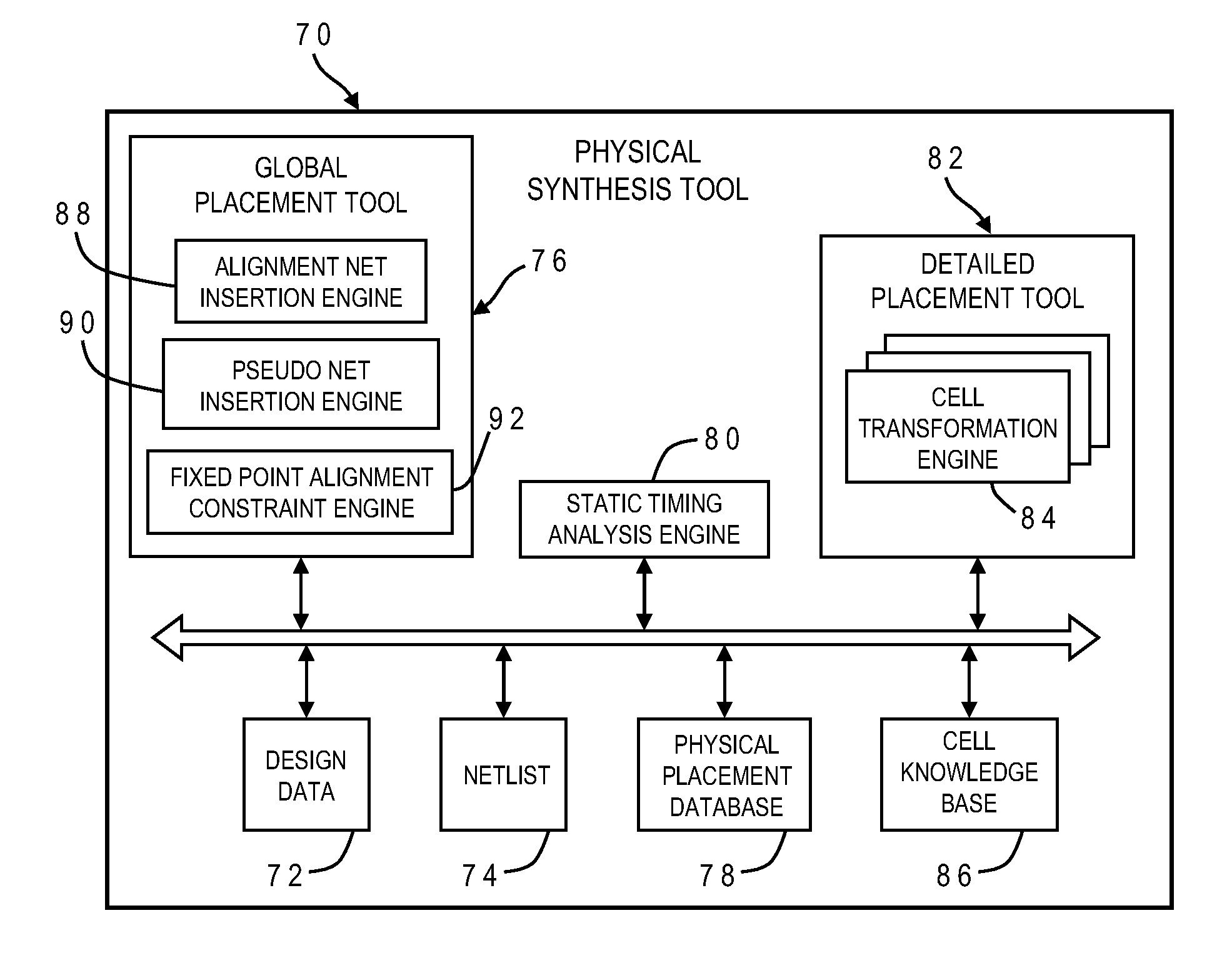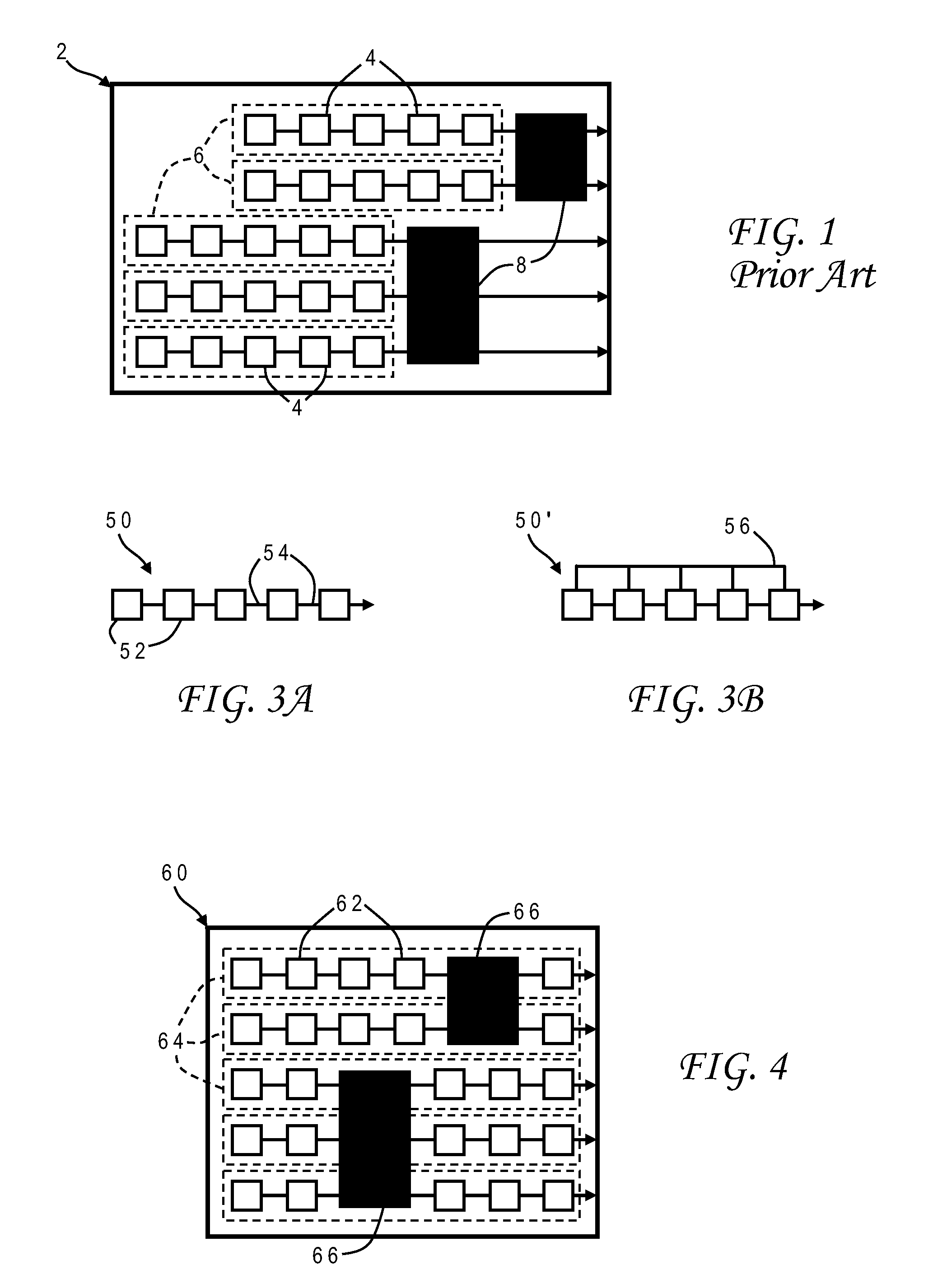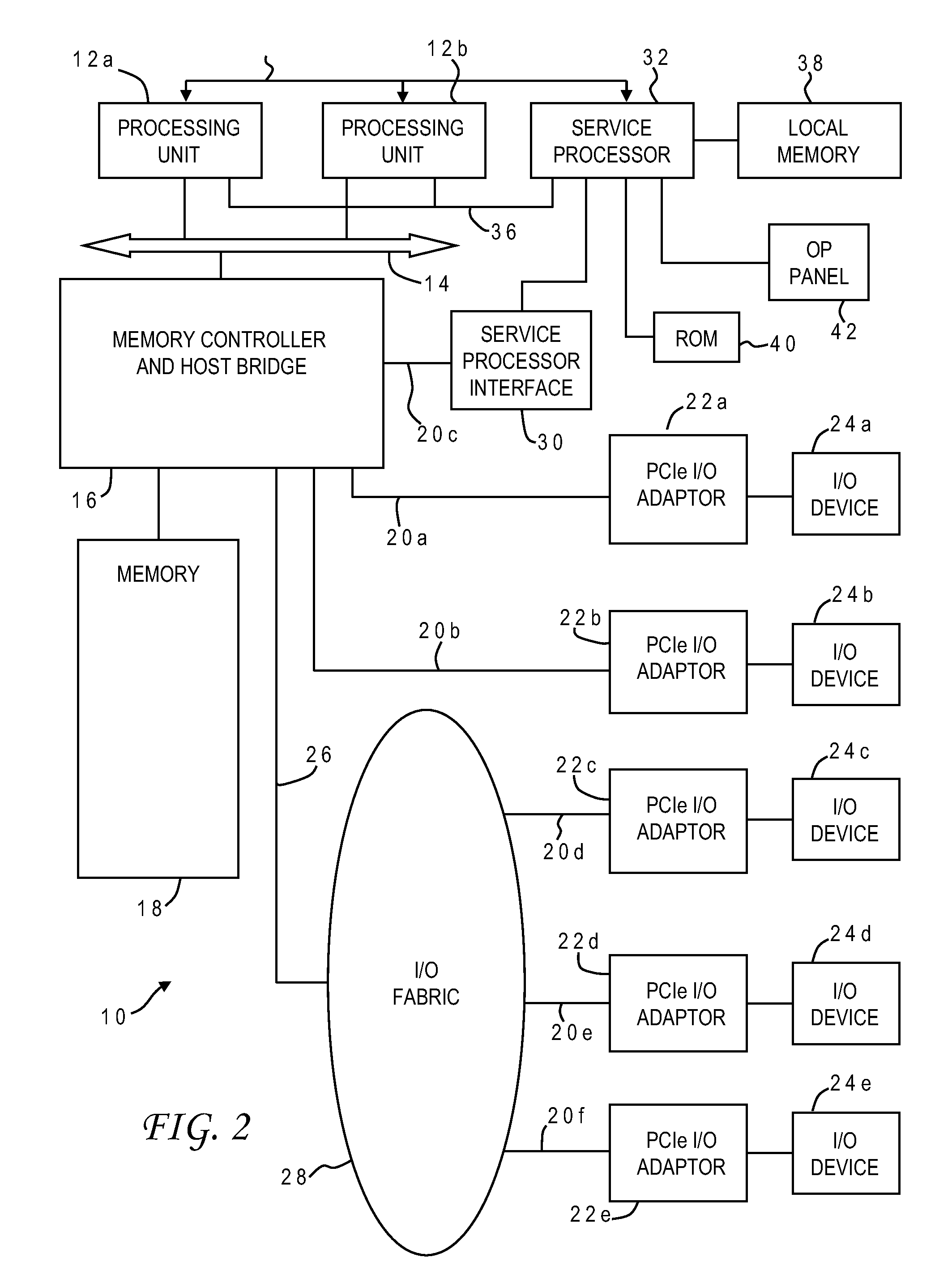Alignment net insertion for straightening the datapath in a force-directed placer
a force-directed placer and datapath technology, applied in the field of semiconductor chips and integrated circuits, can solve the problems of large number of cells, difficult to achieve physical design without the aid of computers, and require complicated connections between cells, so as to reduce overlap and improve efficiency. area usage
- Summary
- Abstract
- Description
- Claims
- Application Information
AI Technical Summary
Benefits of technology
Problems solved by technology
Method used
Image
Examples
Embodiment Construction
)
[0021]Current microprocessor trends are integrating traditionally custom designs with random logic macros (RLMs) into very large integrated circuit designs. In some cases, entire microprocessor units are designed using an automated synthesis flow that integrates these traditional custom designs and RLMs. This type of merged synthesis run is referred to as large block synthesis (LBS). The LBS blocks, i.e., sets of cells or logic modules, require handling dataflow designs differently than traditional RLMs. In particular, as the size of the designs grow, there is a need for improved automated datapath design. Conventional placement tools typically result in designs with critical datapaths that zig-zag and criss-cross all over the layout area.
[0022]It would accordingly be desirable to devise an improved placer which could straighten out these datapaths, but with current placement models there is no way to provide a constraint to tell the placer that a datapath should be straight. Weigh...
PUM
 Login to View More
Login to View More Abstract
Description
Claims
Application Information
 Login to View More
Login to View More - R&D
- Intellectual Property
- Life Sciences
- Materials
- Tech Scout
- Unparalleled Data Quality
- Higher Quality Content
- 60% Fewer Hallucinations
Browse by: Latest US Patents, China's latest patents, Technical Efficacy Thesaurus, Application Domain, Technology Topic, Popular Technical Reports.
© 2025 PatSnap. All rights reserved.Legal|Privacy policy|Modern Slavery Act Transparency Statement|Sitemap|About US| Contact US: help@patsnap.com



